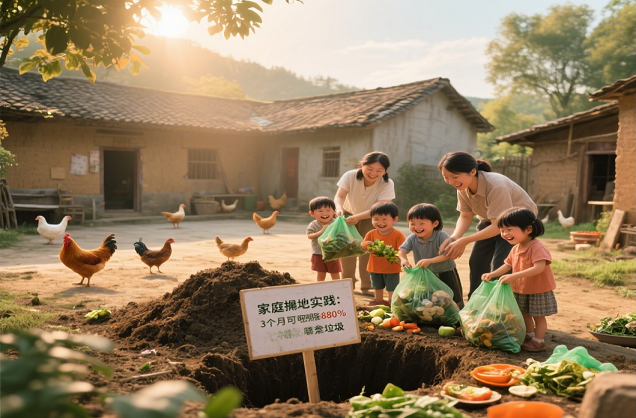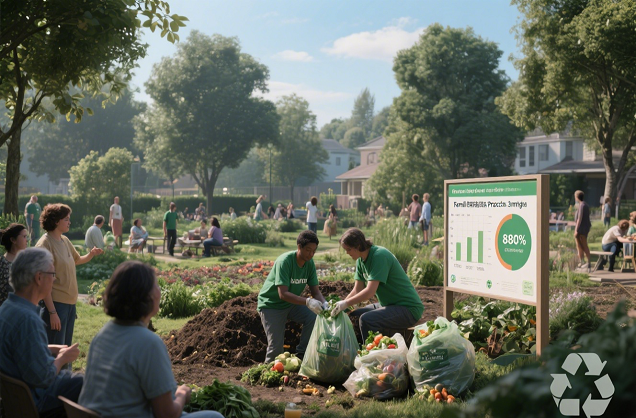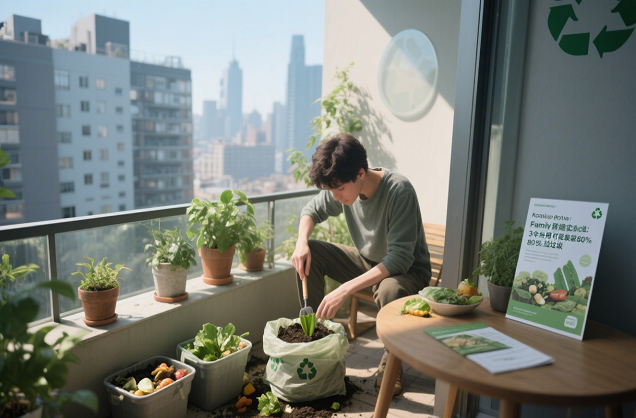Home composting practices: an eco-friendly revolution to reduce food waste by 80% in 3 months with compostable bags
In today's increasingly environmentally conscious world, more and more households are looking for ways to reduce their carbon footprint. Food waste, as a major component of municipal solid waste, accounts for about 30-40% of total waste, which not only takes up a lot of landfill space, but also produces methane, a potent greenhouse gas.

1, the scientific principle of compostable bags and environmental advantages
Compostable bags are not a simple substitute for ordinary plastic bags, but an environmental innovation based on advanced biomaterials science. These bags are typically made from plant starches (e.g., corn, potatoes), cellulose or other biodegradable polymers, which are completely broken down by microorganisms into water, carbon dioxide and organic matter under composting conditions, leaving no microplastics or other harmful residues. Unlike traditional “biodegradable” plastics, truly certified compostable bags (e.g., complying with ASTM D6400 or EN 13432) need to break down completely within a specific time frame and ensure the safety of the composted product.
The environmental advantages of compostable bags are clear from a life cycle assessment perspective. Compared to sending food waste to landfill in ordinary plastic bags, where it decomposes anaerobically to produce methane, home composting with compostable bags achieves aerobic decomposition of organic matter and significantly reduces greenhouse gas emissions. More importantly, this process turns “waste” into a valuable soil amendment, completing a key part of nature's material cycle.

2. Behavior change mechanism behind 80% reduction
The key to achieving a significant reduction in food waste lies in how compostable bags reshape households' food consumption and waste disposal habits. Psychological studies have shown that visible, convenient systems significantly increase adherence to environmentally friendly behaviors. The very presence of a compostable bag in the kitchen is a constant visual reminder that motivates family members to be more active in separating food waste. When people begin to systematically keep track of what is being composted, they are often surprised to learn how much “trash” is actually a valuable resource.
Over the course of three months, participating families experienced several key cognitive shifts: from viewing fruit peels and leaves as waste to recognizing their nutrient value; from viewing composting as extra work to incorporating it into their daily routines; and from focusing on the “disposal” of garbage to focusing on the “recycling” of resources. The behavioral changes brought about by this shift in thinking are long-lasting - data shows that even after the three-month trial period, these households maintained a food waste reduction rate of more than 70%.

3. Potential for scaling up in urban settings
When thousands of households adopt this practice, the collective impact will be extremely significant. Assuming that 20% of households in a city of one million people implement a similar composting program, this could reduce the amount of food waste entering the treatment system by approximately 30,000 tons per year, which is equivalent to a reduction of 12,000 tons of carbon dioxide equivalent emissions. More importantly, this would generate about 7,500 tons of high-quality compost that could support urban greening or community gardening projects.
Municipal managers are increasingly recognizing the value of decentralized composting systems. Some forward-thinking cities have begun distributing compostable bags and bins to residents, and are even offering collection services to use household compost for urban green space maintenance. This “microinfrastructure” has a high return on investment and can be effective in relieving pressure on the waste disposal system.

 Significant progress in PBAT/s
Significant progress in PBAT/s
 PLA/PBAT composite film degrad
PLA/PBAT composite film degrad
 A New Choice for Takeaway Pack
A New Choice for Takeaway Pack
 Significant progress in PBAT+s
Significant progress in PBAT+s
CONTACT
Add: Room 4006, No.1 Helong Yiheng Road, Baiyun District, Guangzhou City
Tel: +8613450255948
Wechat : +86-13450255948
Fax: +86-13450255948
E-mail: 13450255948@163.com








